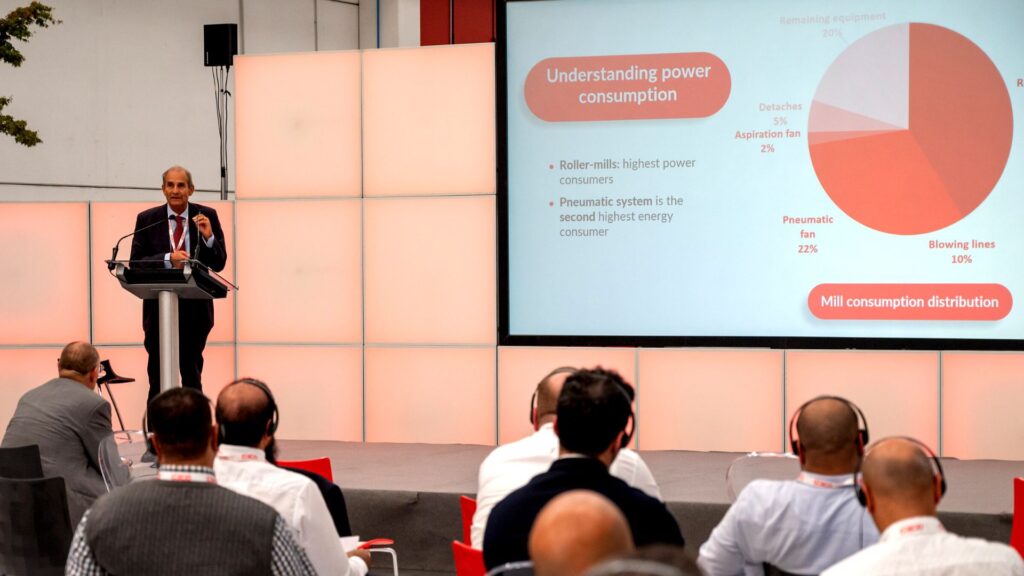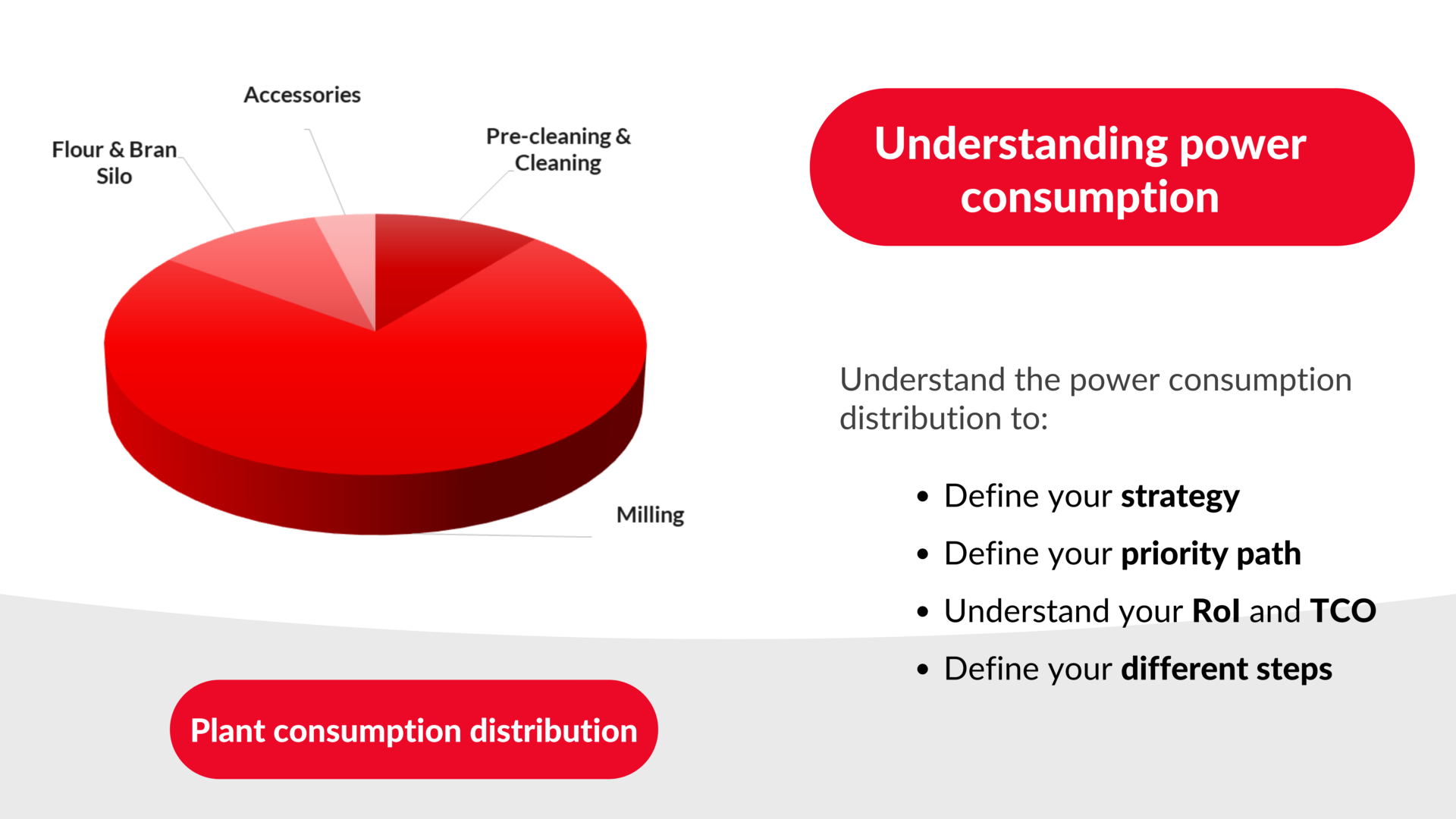Marco Galli – Ocrim Technological Department Director – explains that up to €500,000 a year can be saved by managing energy consumption efficiently, for example by using a 600-tonne mill.

If you were unable to attend the event “Grano, farina e…” (Wheat, flour and…) held on 16-17 September, below are some highlights of the key speeches given by our experts on energy saving.
‘There are no easy solutions to complex problems,’ said Daniele Zotti, Ocrim Construction Site Projects and Operations Engineering Director, during his introductory speech at the technical day. ‘Our corporate philosophy is based on a comprehensive analysis of the milling plant and on setting medium and long-term goals.’ This is a necessary preamble, which is shared by Simone Pedrini, Ocrim Mechanical Department Manager, Paolo Molinari, Ocrim Automation and Electrical Department Manager, and Marco Galli, who stress the importance of analysing a number of inputs with the aim of maximising productivity and defining a feasible energy-saving strategy.
For instance, Marco Galli outlines a scenario in which automation, machines, technology, and layout are seen as factors that influence energy consumption.
Now that electricity costs have skyrocketed, we can no longer afford production losses when we have to shutdown the plant for maintenance. It is essential to drastically reduce production losses, and the modular mill concept is an interesting way of achieving this. This system makes it possible for production to continue during scheduled and unscheduled maintenance downtime with 50% reduced capacity. If we calculate based on real data, this means that this technology consumes three times less electricity, which translates into savings of approximately €140,000 over a period of 300 days each year. And this is just one of several economic advantages that automation has to offer.
With regard to the layout, Marco Galli concentrated on two aspects: the impact of the aspiration system and the location of the rebolt system. If we consider that a 600-tonne mill requires about 1,000 cubic metres per minute of air, by making small adjustments we can definitely save 10% of air – a total of €18,000 per year. On the other hand, the difference in energy consumption between using rebolt with relift and gravity-loaded rebolt is 40 kw which, over a one-year period, is equivalent to saving about €130,000.
Another option involves roller mills and their positioning. For instance, if the B1 and B2 roller mills were to be placed on the floor of the cyclones with direct loading of the plansifters, savings of roughly 2.3 cubic metres of air per second and €120,000 per year could be expected, with the same conditions.

We have given you just a few examples among countless energy-saving possibilities that Marco Galli has taken into consideration. Let us conclude by quoting him “: ‘It is not possible to do everything in all mills, but there is something that can be done in all mills. There is no single solution, there are many solutions, and it is up to us to decide which direction to take”. As a result, it is vital for Ocrim experts and you, the plant operator, to devise a customised energy-saving programme which, among other things, entails making investments that are affordable for everyone.



